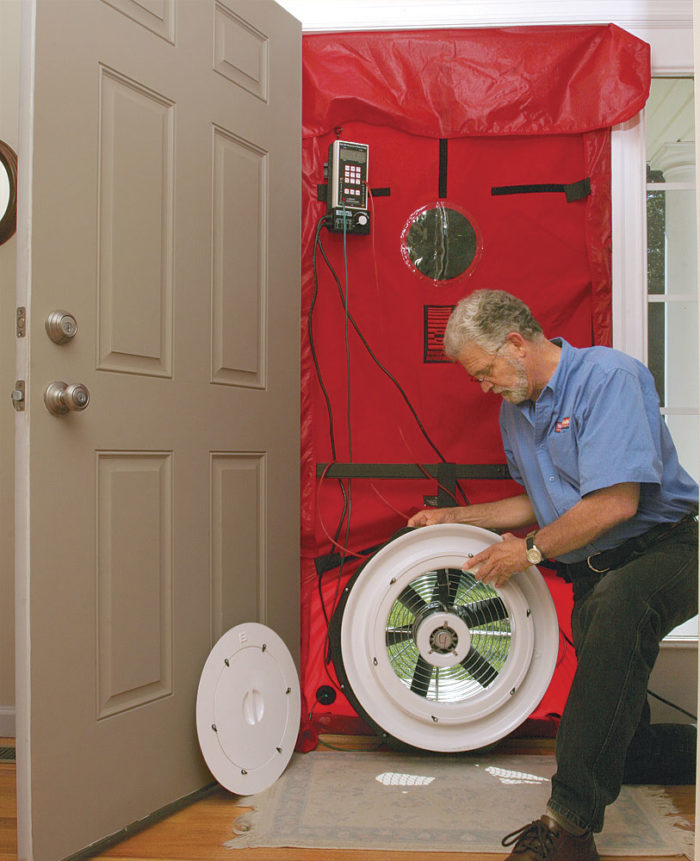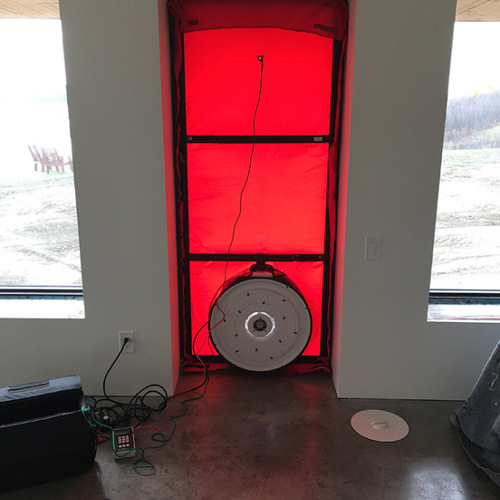
Air leaks in houses are a big problem. Leaks make homes uncomfortable and expensive to heat and cool. They create condensing cold spots that attract mold and rot. They lead to frozen pipes and make homes less resilient during prolonged power outages.
Dealing with air leaks starts with locating them. There are many ways to find air leaks; the easiest and most common is to use a blower door. Blower-door tests used to be the exclusive domain of weatherization workers and building-science geeks, but that’s not the case anymore. Everyone involved in residential building needs to become more familiar with blower-door testing because universal testing for all new homes is coming.
Section N1102.4.1 of the 2012 International Residential Code (IRC) includes a requirement for blower-door testing with airtightness standards spelled out for the country’s various climate zones. New houses will need to meet or exceed these airtightness numbers to meet the current building code (see climate-zone map, below). It’s not clear who will do the testing, however. Some code-enforcement offices let contractors do their own blower-door tests. Others require third-party testing. It seems likely that some will have their inspectors do the testing.
How does a blower door work?
A blower door has a powerful variable-speed fan and a two-channel digital manometer, or air-pressure gauge. After being temporarily installed in an exterior door opening and turned on, it draws air from the house and blows it outside. The manometer measures both inside and outside air pressure.
For most of the tests, the idea is to register a 50-pascal (Pa) difference between the inside and outside air pressure using the blower door’s 3â„4-hp fan. The amount of air and fan power that it takes to register the 50-Pa difference corresponds to how tight or how leaky…
Weekly Newsletter
Get building science and energy efficiency advice, plus special offers, in your inbox.

This article is only available to GBA Prime Members
Sign up for a free trial and get instant access to this article as well as GBA’s complete library of premium articles and construction details.
Start Free TrialAlready a member? Log in















3 Comments
crank up the fan
When i had my blower door test, the operator cranked up the fan to well above 50 pascals. That made it easier to find and fix the few leaks we had, since more air was being sucked in at higher volumes.
I'm surprised at the comment that 3ach50 is the sweet spot. Isn't mechanical ventilation a healthier solution than relying on leaks through the envelope?
That's my quibble too...
There's nothing magic about 3ACH/50. It's a "sweet spot' only in that it's usually easy to hit and it addresses most comfort issues related to drafts, and the amount of energy wasted to infiltration is guaranteed to be reasonable, even in worst-case 3ACH/50 houses.
But it's independent of the ventilation requirements.
A blower door test only tells you the collective size of the holes, not where they are, and he locations matter. Two houses with the same blower door numbers could have fully an order of magnitude difference in infiltration rates, and the location of those leaks aren't necessarily where the parasitic supply or exhaust ventilation is doing the most good.
We have consensus
When Larry Armanda described a house that is tighter than 3 ach50 as "too tight," his choice of words was unfortunate. There is no such thing as a house that is "too tight" -- merely one that is poorly ventilated.
Log in or become a member to post a comment.
Sign up Log in